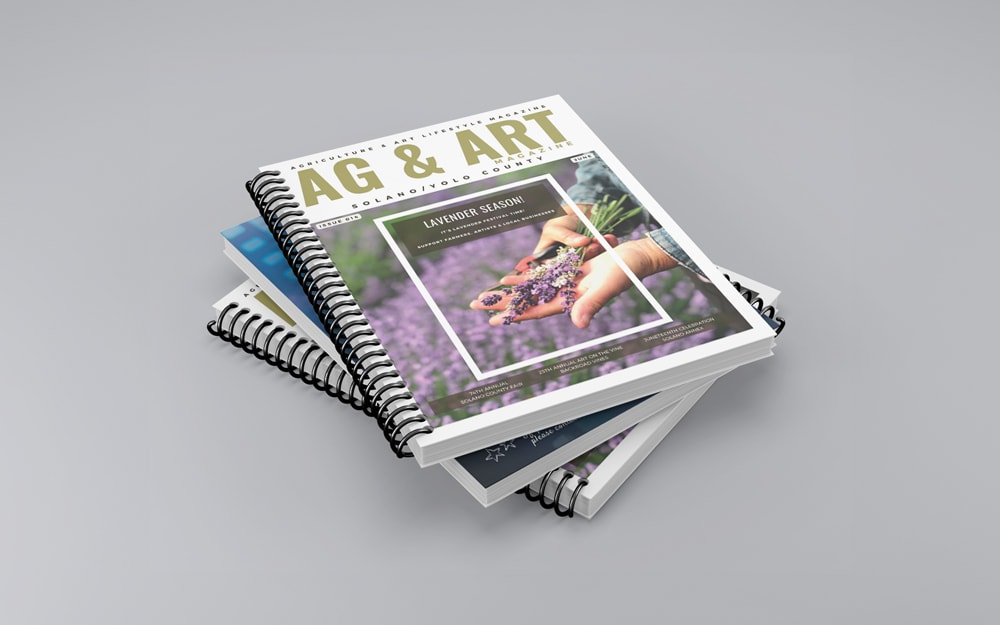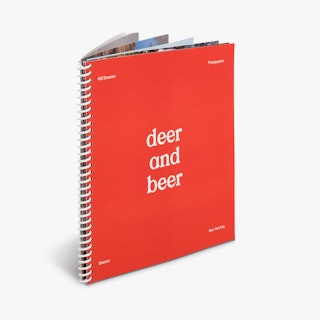The Ultimate Guide to Custom Booklet Printing for Small Businesses
The Ultimate Guide to Custom Booklet Printing for Small Businesses
Blog Article
The Necessary Overview to Comprehending Pamphlet Printing Options and Techniques
The procedure of pamphlet printing entails numerous factors to consider that can significantly influence the end product. From choosing the appropriate format and dimension to comprehending the subtleties of binding approaches, each choice plays a necessary role. Furthermore, variables such as paper stock and printing strategies further affect the efficiency of the pamphlet. As one browses these alternatives, it comes to be crucial to understand exactly how they adjoin and what that suggests for the general end result.
Recognizing Booklet Sizes and formats
When thinking about booklet printing, understanding the different styles and sizes readily available is crucial for achieving the wanted presentation. Pamphlets can be generated in many styles, including saddle-stitched, spiral-bound, and perfect-bound, each offering distinct benefits. Usual dimensions range from common letter (8.5 x 11 inches) to smaller choices like A5 (5.8 x 8.3 inches), enabling for versatility based upon material and target audience.Selecting the suitable dimension can affect both the format and reader interaction. Bigger sizes might suit visually driven web content, while smaller styles may be extra portable and easy to use. Furthermore, the number of web pages influences the option of binding technique, as thicker brochures might need stronger bindings. Inevitably, comprehending these aspects permits for a much more customized method, making sure that the final product aligns with the designated message and aesthetic, enhancing the total performance of the interaction.
Choosing the Right Paper Supply

Binding Methods: Alternatives and Factors To Consider
When it concerns binding approaches for booklets, several options are available, each with distinct advantages. Saddle stitch binding provides a cost-efficient remedy for thinner pamphlets, while perfect binding techniques provide a more polished search for thicker magazines. Wire-O binding sticks out for its sturdiness and simplicity of usage, making it perfect for records that need versatility.
Saddle Stitch Binding
Saddle stitch binding provides a sensible and cost-efficient option for putting together booklets, making it a preferred selection amongst authors and businesses. This binding technique entails folding sheets of paper in fifty percent and stapling them along the fold line, creating a orderly and cool appearance. Usually appropriate for booklets with a lower web page matter, saddle stitching is optimal for magazines, pamphlets, and instructional products. The simpleness of this technique permits quick production and is frequently favored for advertising products or short runs. It is essential to keep in mind that saddle stitch binding may not be suitable for thicker brochures, as the spine might not hold up under boosted weight. In general, it continues to be a trusted choice for many printing tasks.
Perfect Binding Methods
Perfect binding is an extensively utilized strategy that supplies a polished and expert finish to publications and pamphlets. This technique entails gluing the pages with each other at the spine utilizing a solid adhesive, enabling a tidy edge and the capability to hold a bigger number of web pages contrasted to saddle stitching. Perfect binding is specifically suitable for thicker brochures, such as magazines and annual records, where a sturdy, flat spinal column is wanted. Additionally, it uses the alternative for a printed cover that can be developed to boost visual appeal. Considerations such as page matter, paper weight, and the planned usage of the booklet ought to be taken into account, as they can impact durability and general quality.
Wire-O Binding Choices
Wire-O binding, recognized for its resilience and versatility, uses a superb alternative for booklets that require easy page turning and a professional appearance. This binding method employs a series of metal loops that hold pages securely, allowing them to exist level when open. It is specifically ideal for brochures, manuals, and discussions as a result of its durable nature. Wire-O binding is offered in different colors and sizes, fitting different page matters and densities. Furthermore, it permits the incorporation of tabs and covers, improving the brochure's overall visual. Factors to consider for Wire-O binding include the choice of cord color, the size of the loopholes, and the degree of customization wanted, every one of which can profoundly affect the end product's appearance and performance.
Digital vs. Offset Printing: Which Is Best for You?
When selecting a printing approach for brochures, understanding the distinctions between electronic and balance out printing is important. Digital printing utilizes contemporary technology to generate premium prints quickly and cost effectively, making it optimal for brief runs or jobs requiring fast turn-around times. It enables customization, offering the capability to publish on-demand with minimal waste.In comparison, counter printing is a typical technique that masters producing large quantities with regular high quality. It entails transferring ink from a plate to a rubber covering, then to the paper, which leads to vivid colors and specific details. However, balance out printing typically needs longer arrangement times and is more economical for bigger volumes.Ultimately, the choice between electronic and counter printing depends on job needs, budget, and desired quantity. For little, time-sensitive tasks, electronic could be the ideal option, while offset might be more effective for larger, top notch productions.

Designing Your Pamphlet: Tips and Best Practices
When creating a pamphlet, cautious interest to format, font choice, and shade use can significantly enhance its performance. A well-structured format guides the reader's eye, while appropriate typefaces ensure readability and convey the wanted tone. Furthermore, efficient use color can evoke feelings and emphasize vital information, making the total layout a lot more impactful.
Choosing the Right Layout
Just how can one properly select the right format for a brochure? It is essential to review the booklet's objective and target audience. A clean, arranged design boosts readability and interaction. Making use of a grid system can help in aligning aspects consistently, producing a professional look. Additionally, including visual pecking order through varying dimensions and placements of pictures and message can direct the viewers's eye and emphasize crucial details. It is also essential to leave sufficient white area, which protects against overcrowding and permits far better focus. Lastly, examining different designs via mock-ups can provide insight into just how the design carries out in real-world situations, ensuring that the end product satisfies both functional and aesthetic demands.
Choosing Ideal Typefaces
An appropriate typeface can greatly enhance the overall layout of a pamphlet, enhancing the format and enhancing the web content's message. The option of font styles should consider readability, specifically for body message, as it ensures the info is obtainable to all viewers. Sans-serif typefaces are usually favored for electronic styles, while serif font styles can provide a conventional feel in published products. It's a good idea to restrict font options to two or 3 to keep aesthetic coherence. Additionally, typeface dimension plays a crucial function; headings should be not overwhelming yet distinctive, while body text should be comfy for analysis. When choosing fonts, placement with the brochure's theme and target market is necessary for efficient communication and visual charm.
Effective Usage of Color
Color functions as a powerful device in booklet layout, shaping assumptions and directing reader feelings. It can evoke feelings of calmness, depend on, or excitement, depending on the shades picked. Designers ought to think about shade concept principles, ensuring that the selected combination aligns with the brochure's check message and target market. For example, using warm colors like red and orange can develop necessity, while cooler tones like green and blue foster tranquility.Additionally, contrast plays a vital duty; complementary shades can enhance readability and aesthetic charm. Consistency in shade usage across web pages better strengthens brand name identification and cohesion. Inevitably, reliable color execution not only catches attention yet likewise strengthens the brochure's function, making it an important element of successful design.
Ending Up Touches: Coatings and Unique Results
While many consider the material and layout of a pamphlet the most essential components, the ending up touches, such as finishes and special results, play a vital role in improving its general charm. Coatings can offer protection and resilience, guaranteeing that the booklet holds up against damage. Matte surfaces provide a sophisticated, non-reflective surface area, while glossy coverings can make shades appear more captivating and dynamic. Unique effects, like embossing or foil marking, add a tactile measurement that can create a remarkable perception. These techniques can highlight certain areas, accentuating vital info or creating aesthetic his response interest. Furthermore, UV covering can give a high-shine surface that boosts the overall look.Together, these ending up touches not only improve the booklet's aesthetic yet likewise connect professionalism and trust and attention to information, inevitably leaving a long lasting influence on the visitor.
Expense Considerations for Brochure Printing
Recognizing the various expense factors to consider for booklet printing is necessary for businesses and organizations aiming to enhance their spending plans. Key elements affecting prices include the choice of paper, ink, and binding techniques. Greater top quality products, such as premium paper or specialized inks, usually boost the total expenditure. Additionally, the size and page count of the brochure play a considerable duty; bigger pamphlets call for even more sources and time to produce.Another important consideration is the printing technique, whether digital or offset, as each has its own pricing structure and suitability for different quantities. Companies ought to likewise factor in design costs, which can vary based upon complexity and the use of expert services. Eventually, shipping and handling charges can add to the total, particularly for big orders. By examining these aspects, organizations can make informed decisions that line up with their financial capabilities while achieving the desired top quality in their published products.
Often Asked Questions
What Are the Environmental Influences of Pamphlet Printing?
The environmental impacts of booklet printing consist of logging from paper production, carbon browse this site emissions from transport, and waste generation from thrown out materials - Booklet Printing. Sustainable techniques, such as utilizing recycled paper and environment-friendly inks, can reduce these effects
Just How Can I Make Certain Color Accuracy in My Pamphlet?
To ensure color precision in a booklet, one should make use of calibrated displays, utilize expert shade accounts, conduct examination prints, and choose top quality printing solutions that use color matching and proofing alternatives for best outcomes.
What Is the Common Turn-around Time for Brochure Printing?
The typical turn-around time for booklet printing differs depending on the intricacy and amount - Booklet Printing. Normally, it varies from a couple of days to 2 weeks, influenced by elements such as printing approaches and ending up needs
Are There Minimum Order Quantities for Brochure Printing?

Can I Publish Booklets in Multiple Languages?
Printing booklets in numerous languages is possible. Lots of printing solutions use options for bilingual or multilingual designs, enabling for effective interaction. Mindful preparation guarantees that create elements fit numerous languages without compromising readability or appearances. Additionally, aspects such as paper supply and printing techniques additional affect the effectiveness of the booklet. When taking into consideration pamphlet printing, understanding the various layouts and dimensions readily available is essential for achieving the wanted discussion. When choosing a printing technique for brochures, understanding the differences in between electronic and balance out printing is vital. Furthermore, the size and web page matter of the brochure play a considerable role; bigger brochures need more sources and time to produce.Another crucial consideration is the printing technique, whether electronic or balanced out, as each has its own pricing framework and suitability for different quantities. The ecological effects of booklet printing consist of deforestation from paper production, carbon exhausts from transportation, and waste generation from discarded products.
Report this page